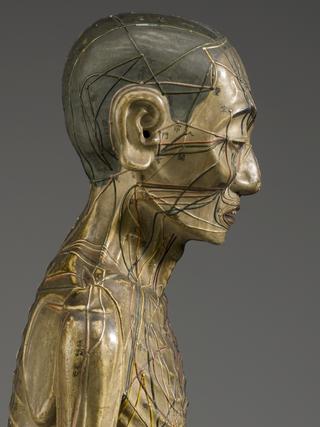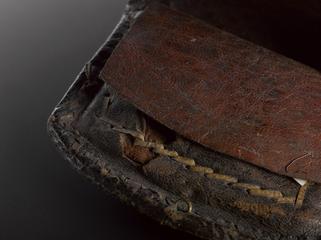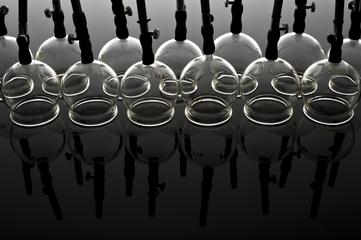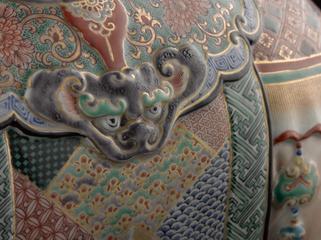




Ivory inro, rectangular body, oval in cross-section, pull apart in centre forming a receptacle and lid, with a cord running through 2 side tubes, cord completed with coral bead (ojime), body inlaid with gold, Japanese, before 1916
An inro is a small decorative container. It carries items such as medicines or tobacco from the sash of a kimono. A kimono is a traditional form of Japanese dress. Inro were usually worn in conjunction with carved toggles called netsuke. They were often made from ivory or bone. They were considered objects of status. This beautiful box is made of a lacquered ivory with gold inlay depicting a small waterside dwelling. A traditional fishing boat is on the reverse. The box pulls apart at the centre to form a receptacle and lid. A cord runs through the ‘himotoshi’. This Japanese term is used for the holes on each side of the compartment.
Details
- Category:
- Asian Medicine
- Collection:
- Sir Henry Wellcome's Museum Collection
- Object Number:
- A641987
- Materials:
- complete, ivory, gold (metal), string (fibre product) and coral
- Measurements:
-
overall: 35 mm x 25 mm x 10 mm, .01kg
- type:
- inro
- credit:
- Glendining




